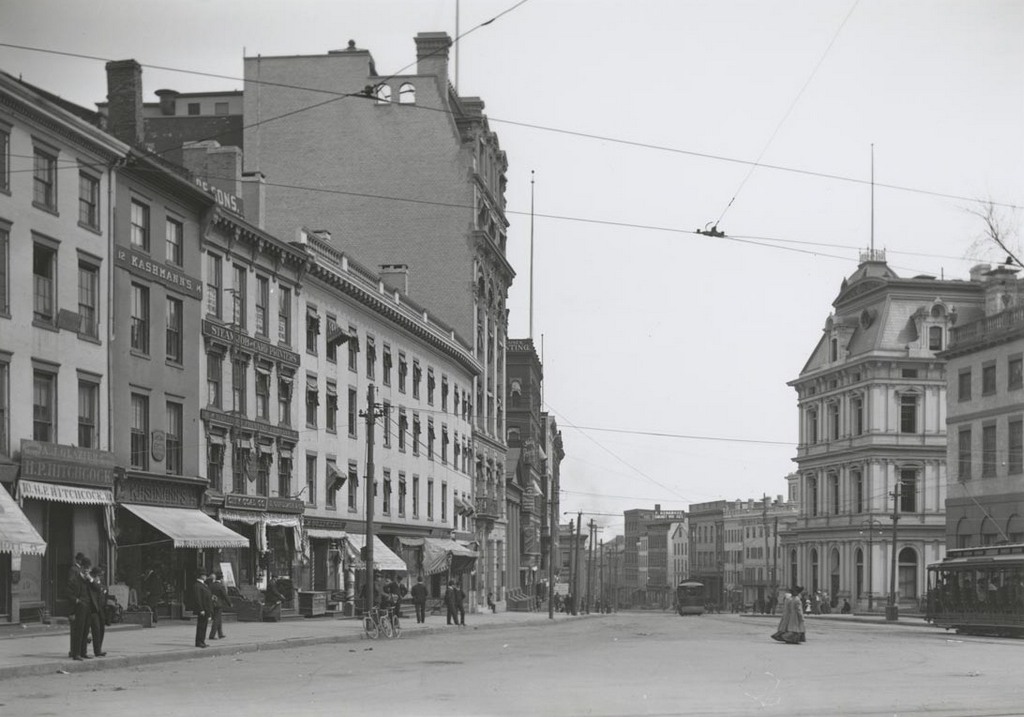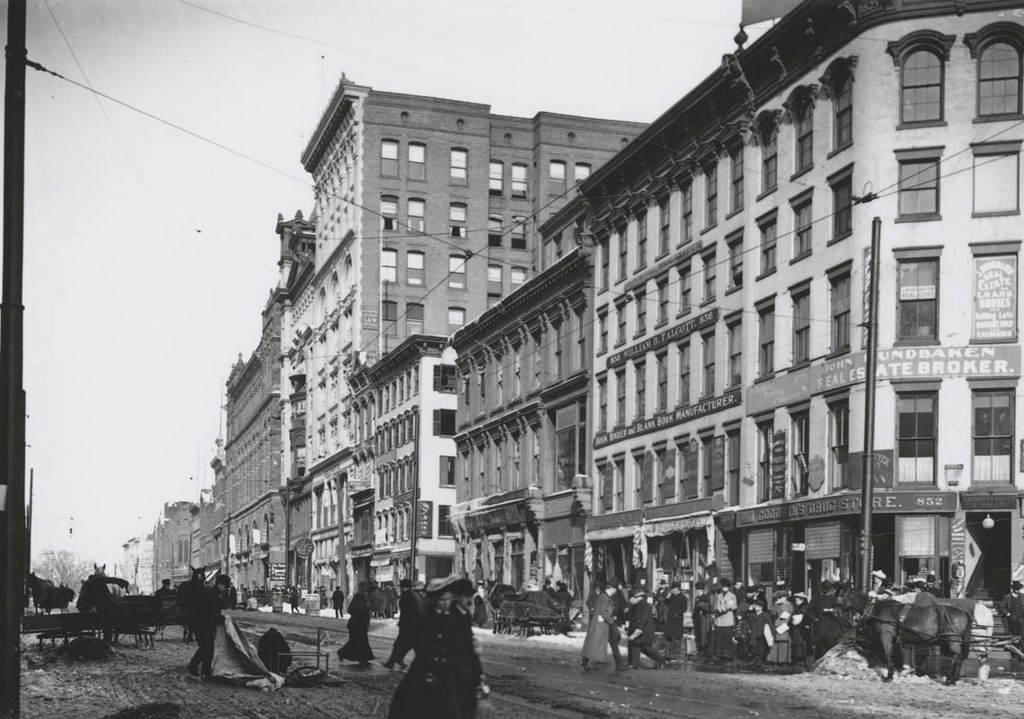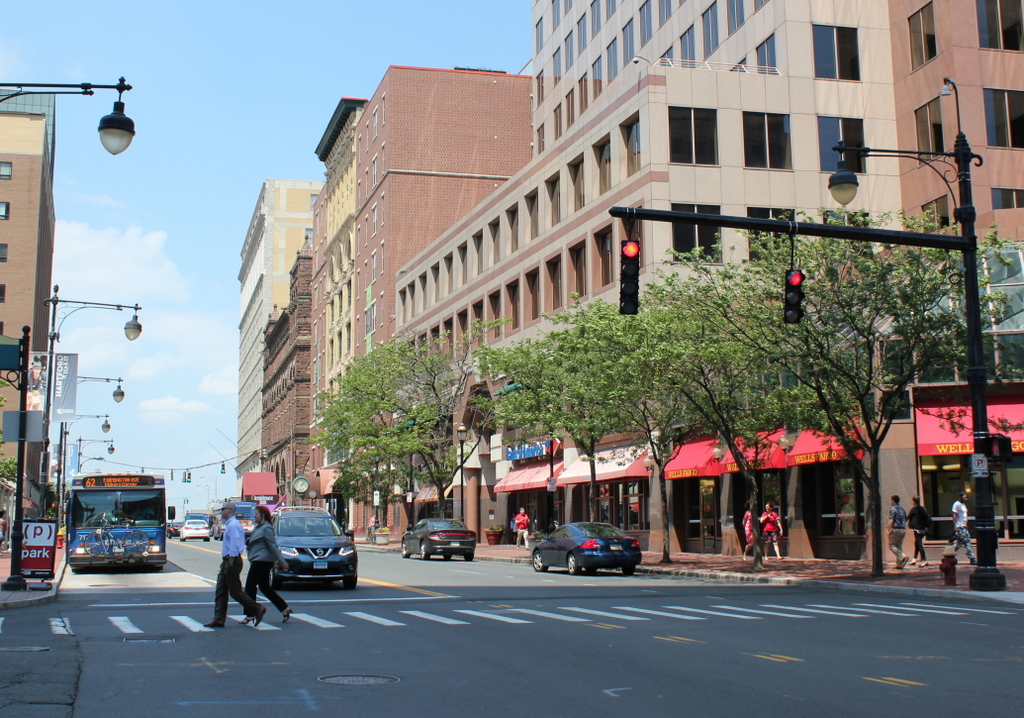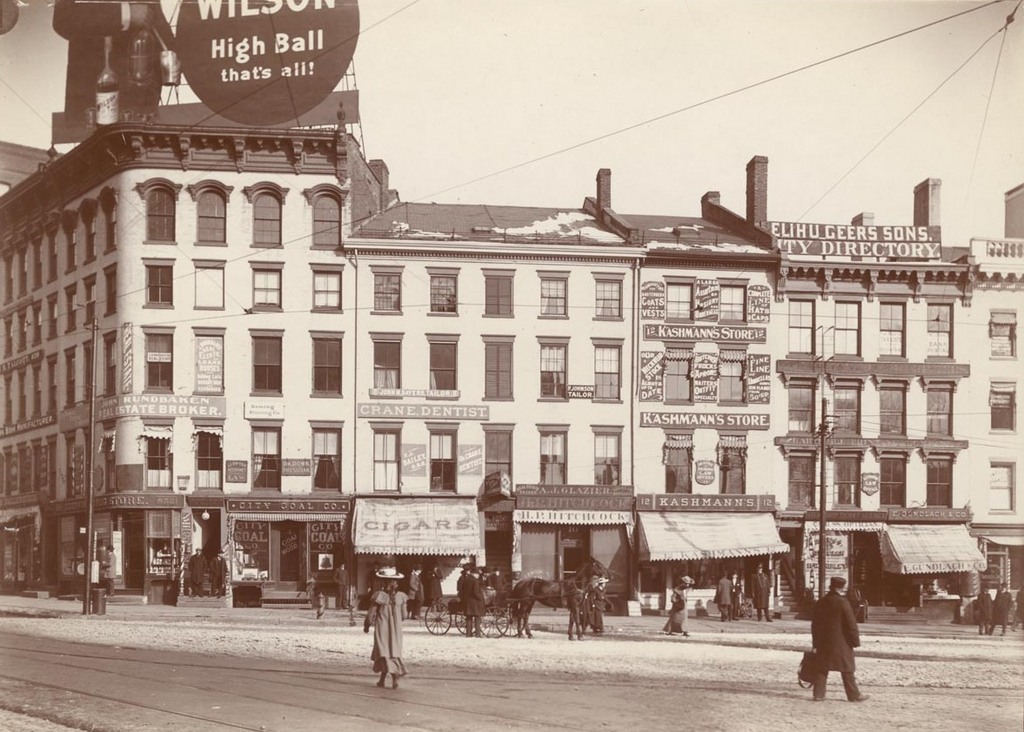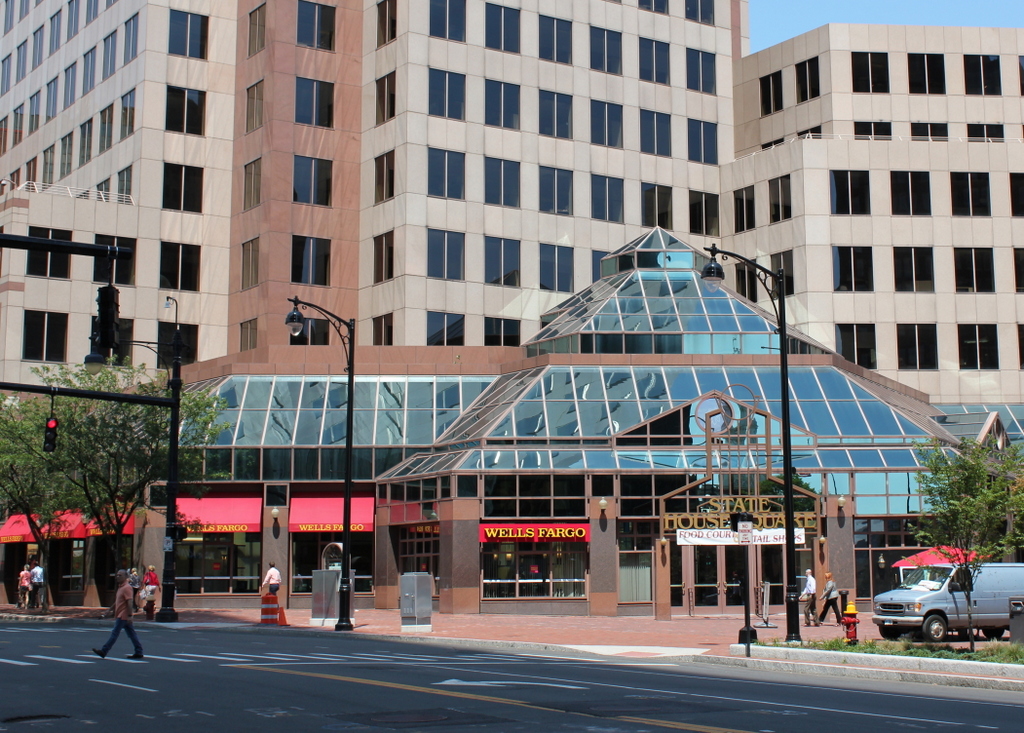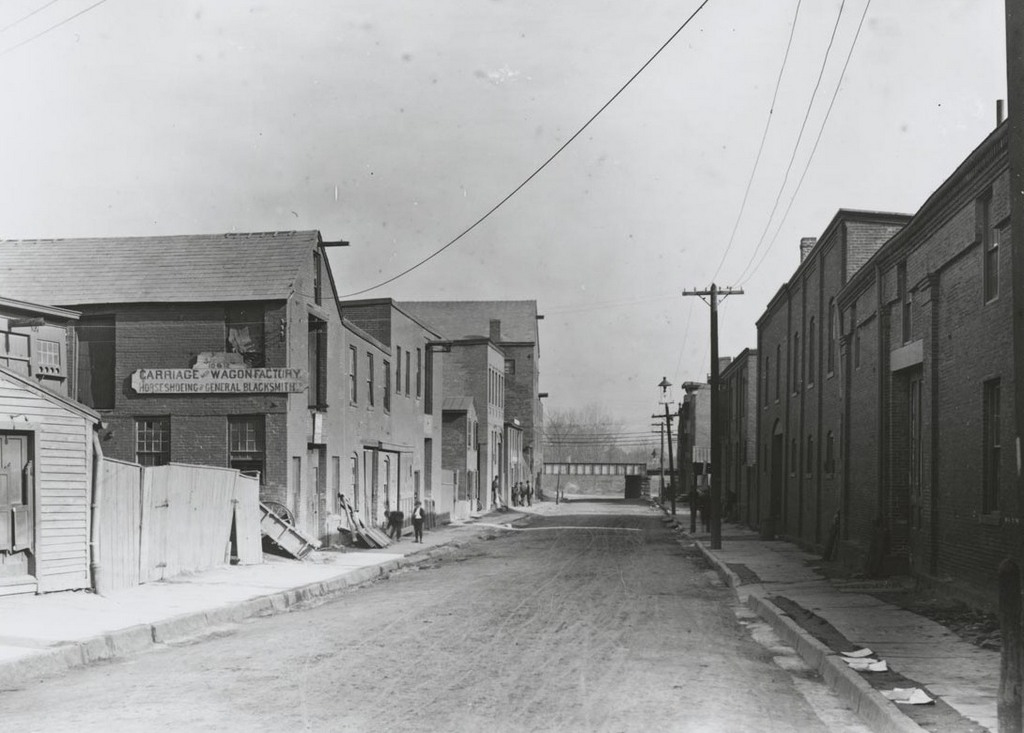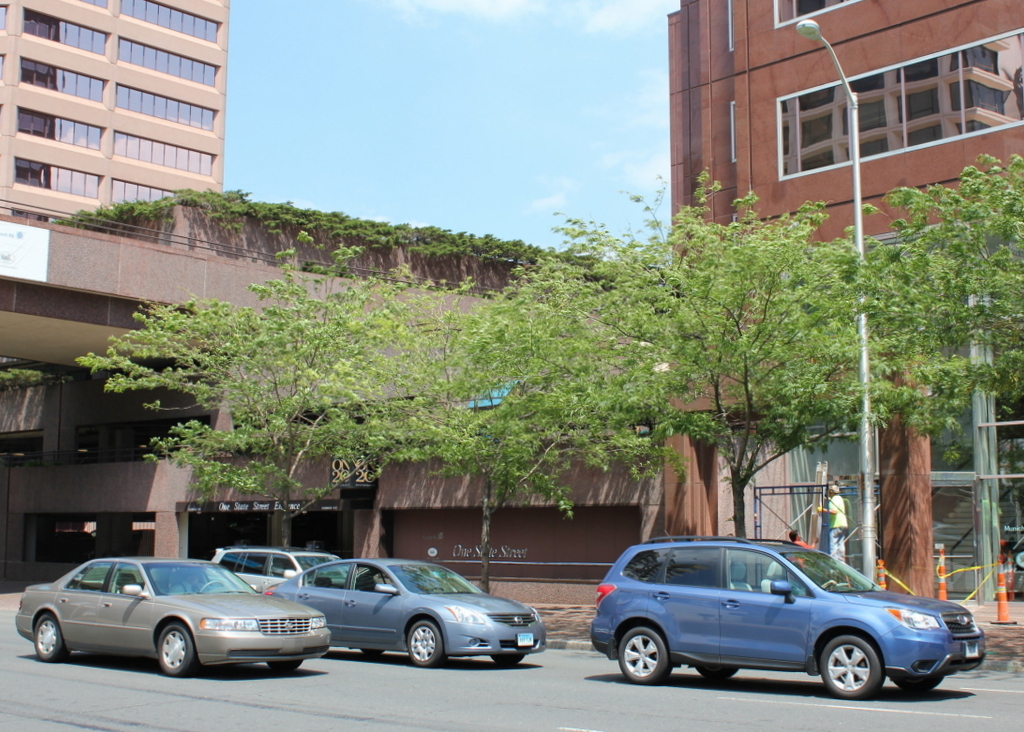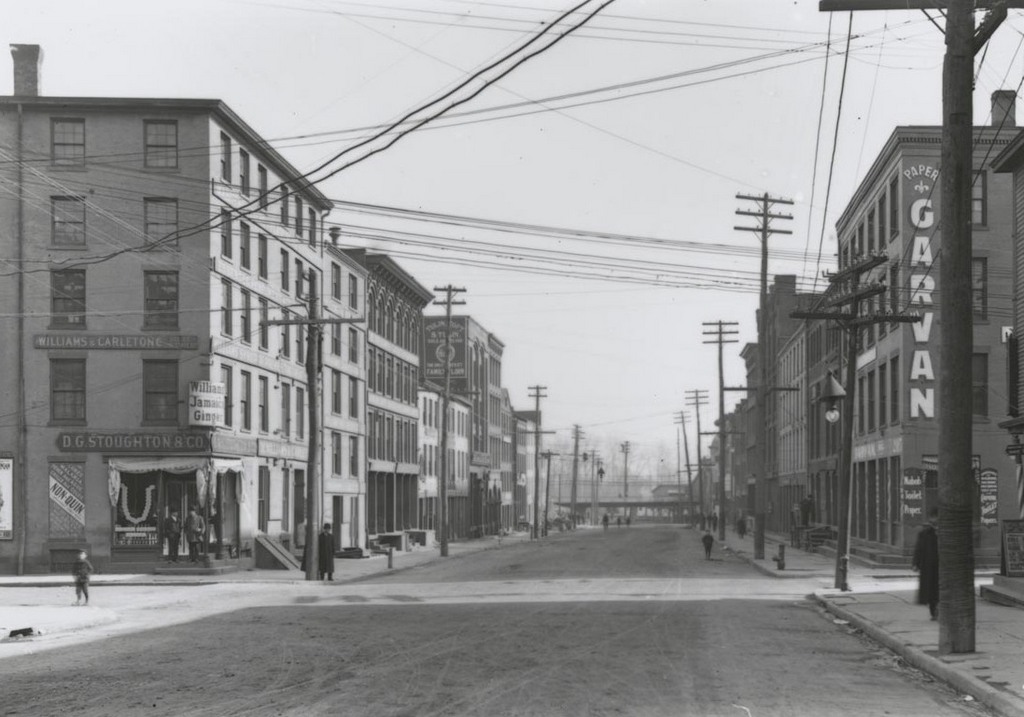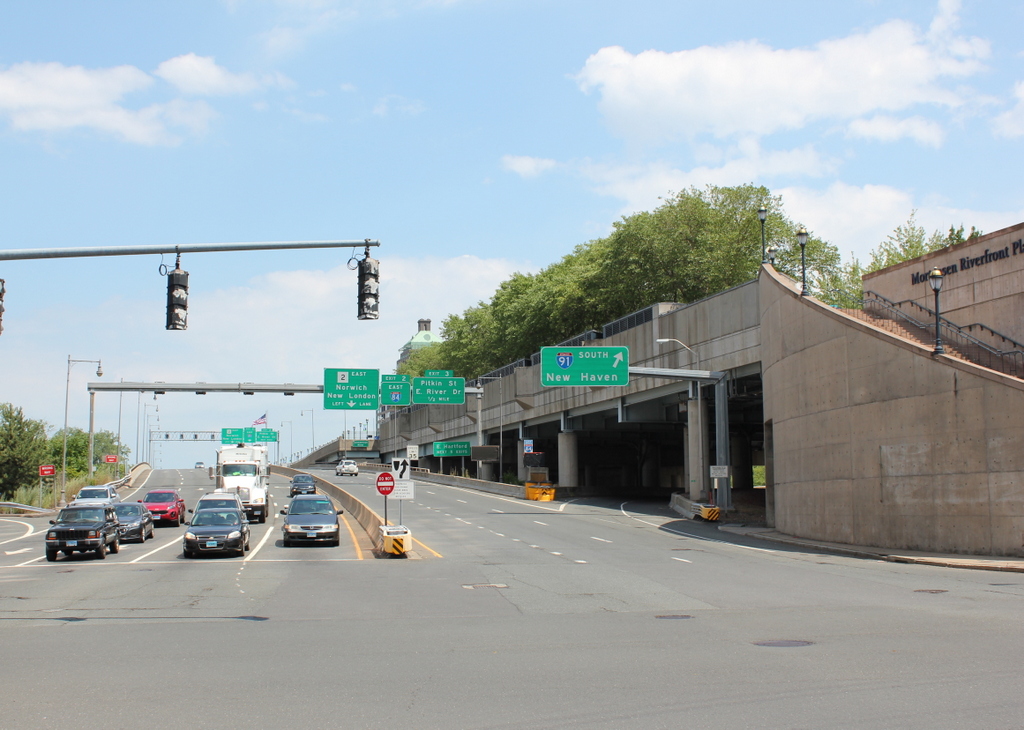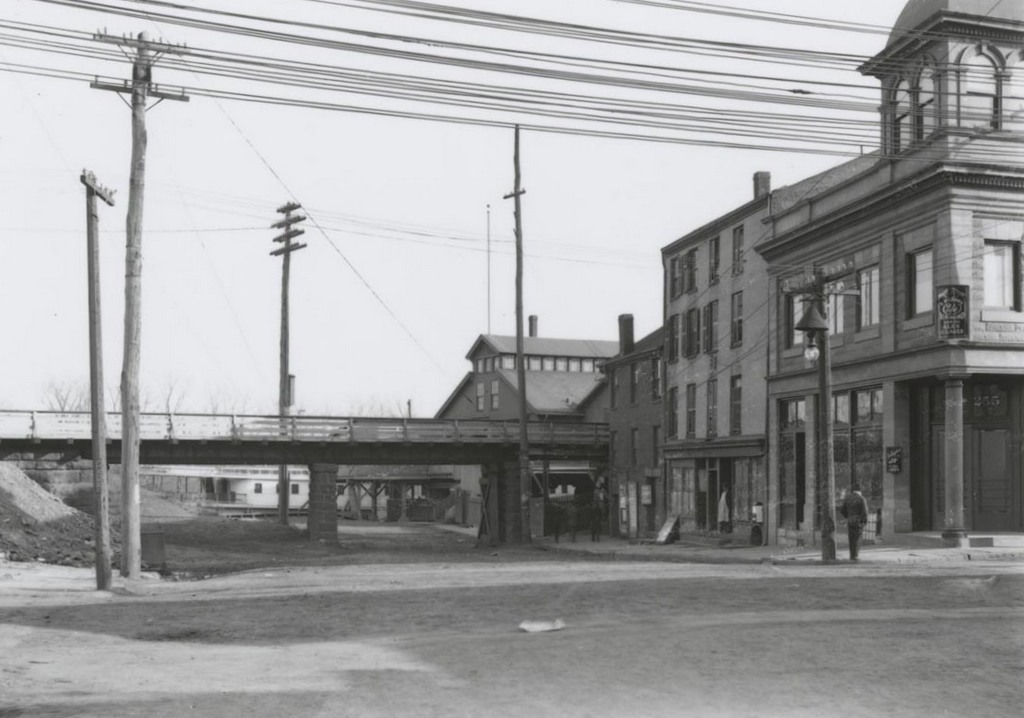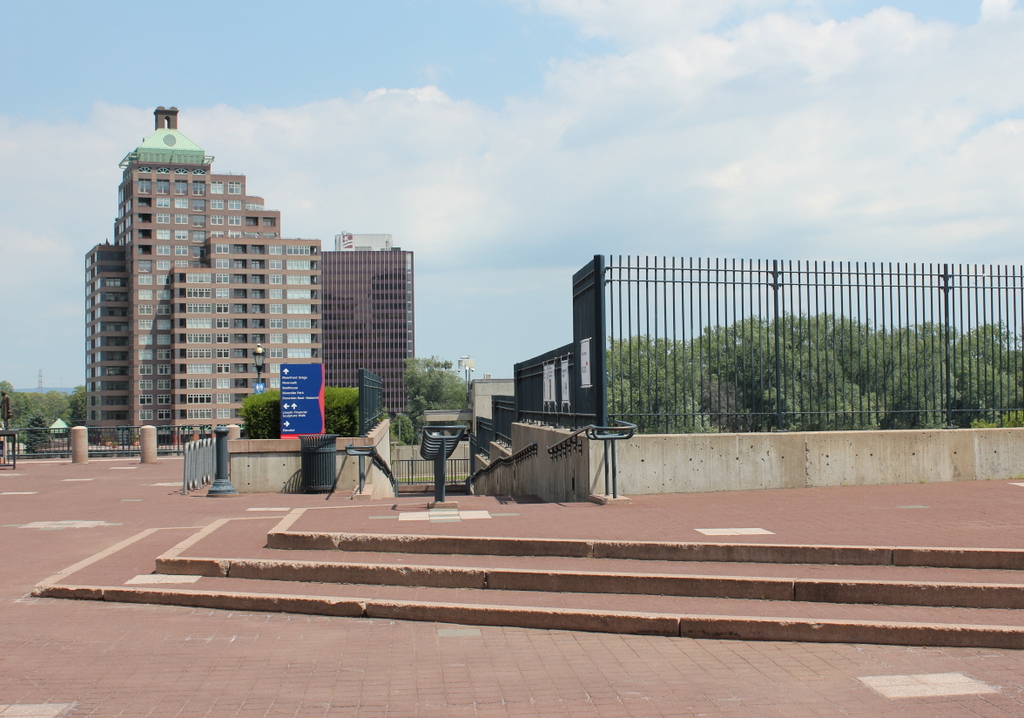Looking east on State Street from Main Street in Hartford, on April 22, 1906. Image courtesy of the Connecticut State Library.
The scene in 2016:
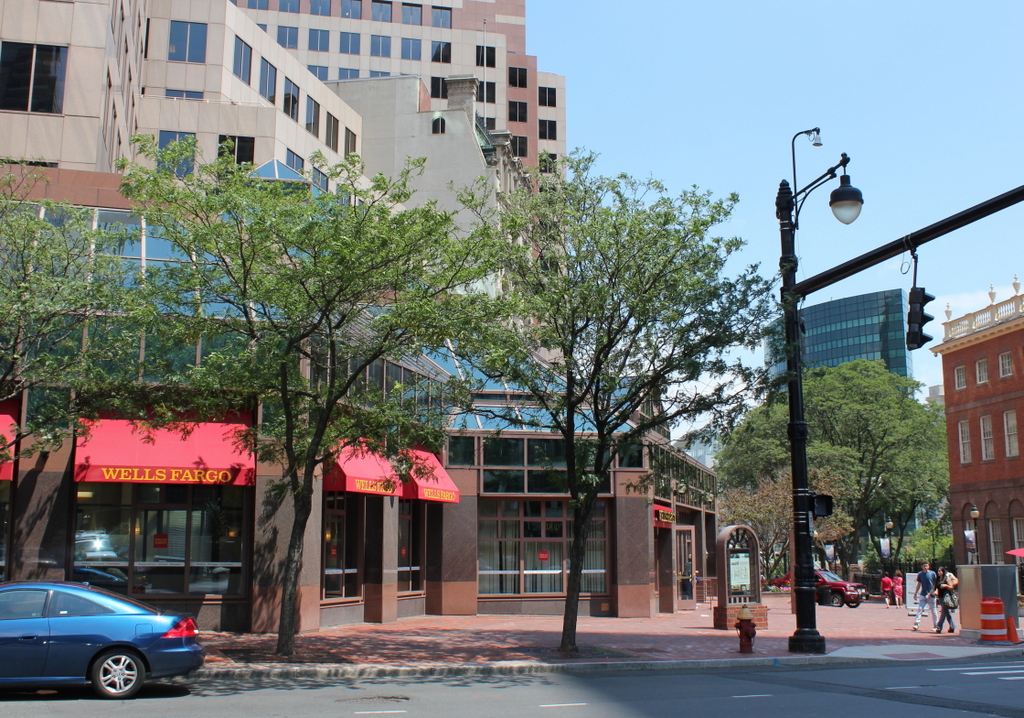
The 1906 photo here shows several prominent buildings at the western end of State Street, including the Old State House on the far right and the post office building next to it. On the left side of the street, the long four-store building near the foreground was the United States Hotel. It was built in the early 1800s, and for much of the century it was one of the finest hotels in the city. The eastern part of the building was demolished in the 1890s to build the First National Bank Building, which was completed in 1899 and dominates the left side of the first photo. By the time this photo was taken in 1906, the rest of the hotel was still standing, but had been converted into offices in 1901.
Built in 1796, the Old State House was probably the oldest building in the first photo, and today it is the only one that has survived relatively intact. The old United States Hotel building was demolished in 1924, and the post office followed in 1933. In the early 1980s, the entire left side of the photo was redeveloped as State House Square, and the only remnant of the old commercial buildings here is the First National Bank Building, whose facade was incorporated into the construction of the modern office building.

